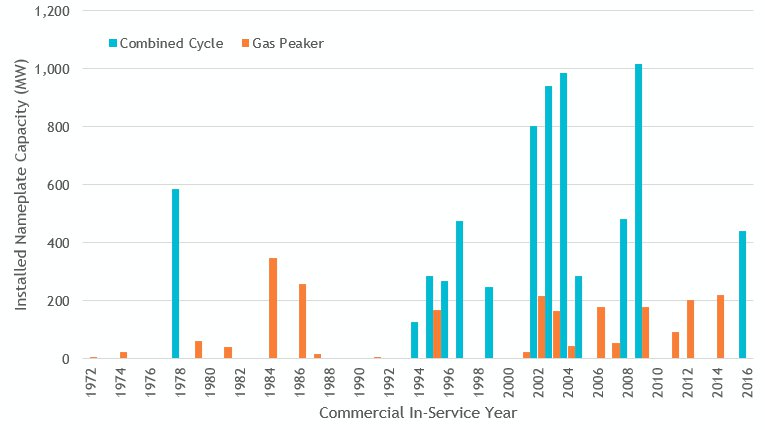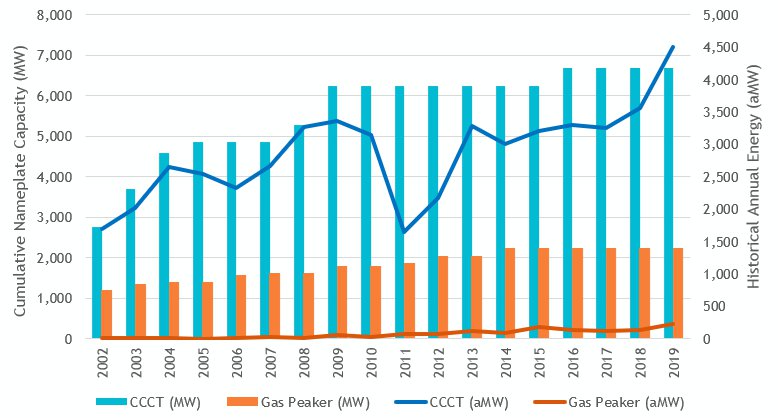Natural Gas
The first natural gas-fired baseload power plant developed in the region was Portland General Electric’s 600 megawatts Beaver combined cycle power plant in 1974. A few gas peaking plants, primarily frame simple cycle combustion turbines, were constructed in the early 1980’s, but it wasn’t until the early 1990’s that natural gas power plant development really picked up. General Electric released its F-class frame unit, a machine with increased reliability and efficiency, and combined with low gas prices, the region saw a shift in development from coal to gas plants. A second wave of gas plant development by independent power producers came in response to the west coast energy crisis in the early 2000’s. Over the past 15 years, the development of gas peaking plants (simple cycle and reciprocating engine) in the Pacific Northwest and elsewhere can be attributed in part to the need for additional flexibility and efficiency in the power system to supplement and integrate variable energy resources such as wind and solar. The last natural gas-fired plants developed in the region were Portland General Electric’s 220 MW Port Westward II reciprocating engine plant in 2014 and the 440 MW Carty combined cycle combustion plant in 2016. Today, baseload gas-fired plants provide about 7,500 megawatts of nameplate capacity and gas-fired peaking plants provide 2,200 megawatts of nameplate capacity in the region.
Natural Gas Plant Development in the Pacific Northwest

The annual dispatch of the region’s combined cycle combustion turbines, as part of the thermal resource fleet, are largely dependent on the hydropower system. The year 2011 was an above average hydro year, and thus the CCCTs produced on average only 26% of their capacity factor (the amount a unit generates as a percentage of their maximum available output). The year 2019 was a very poor hydro year, and thus the CCCTs were called on more to help meet load and generated at an average annual capacity factor of 67%. On average, since 2002, the CCCT fleet has generated at a roughly 50% capacity factor. Gas peakers – including simple cycle combustion turbines and reciprocating engines - have traditionally been operated to meet peak needs only, and thus typically have very low annual average capacity factors. However, as new technology has allowed for greater flexibility, gas peakers have been playing a greater role in the overall system. In the early 2000’s, the region’s gas peakers were operating at an average annual capacity factor of 1-2%. That has steadily increased and in the last five years, the gas peakers produced at an average 7% capacity factor. In the year 2019, that capacity factor was even higher, at 10%. For a single utility or the region as a whole, having gas resource capacity and capability has traditionally been a hedge against low or less flexible hydro system conditions.
Natural Gas Cumulative Capacity vs. Historical Energy Production




